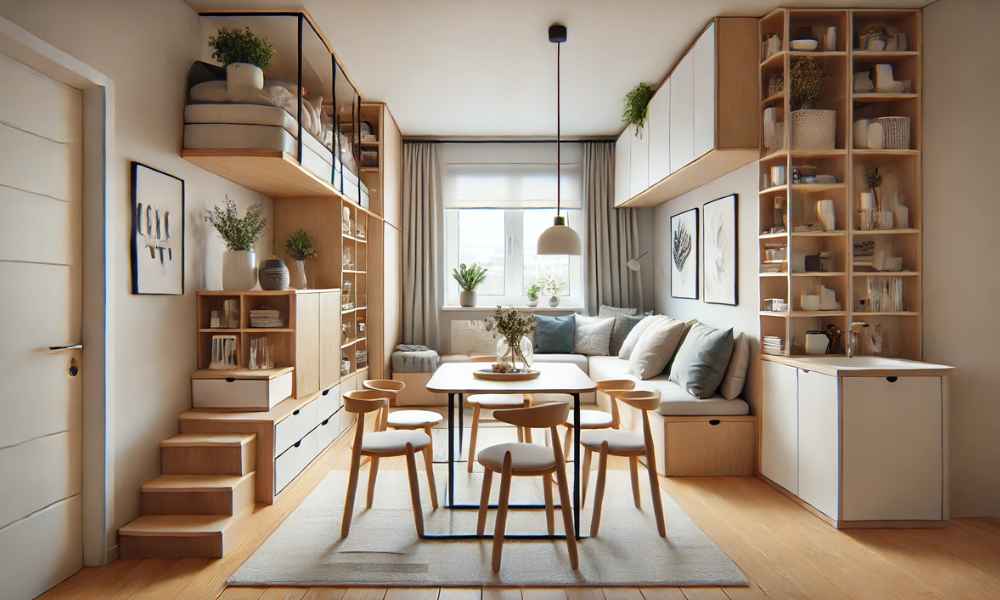Fit A Dining Table In A Small Living Room can feel like solving a puzzle. You want a functional space where you can enjoy meals, but you also need to keep the room open and uncluttered. The key to success lies in smart planning, creative furniture choices, and maximizing every inch of available space. Whether you live in a cozy apartment or a compact home, there are plenty of ways to integrate a dine table seamlessly into your living area. With the right strategies, you can create a space that feels both practical and inviting without sacrificing style or comfort.
Assessing Your Space: The First Step to Success
Before you bring in a dine table, take a step back and evaluate your living room layout. Measure the available area and consider the natural flow of movement within the room. Identify high-traffic areas, such as pathways to doors or between furniture, to avoid placing the table in an inconvenient spot. Look for underutilized corners, empty walls, or spaces near windows where a table might fit without disrupting the room’s functionality. Also, consider the overall aesthetic—choosing furniture that compliments your existing décor will help create a cohesive and visually appealing environment.
Choosing the Right Dining Table for a Small Living Room
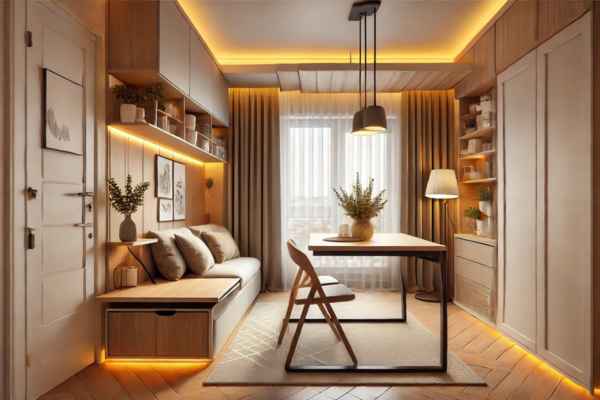
Selecting the perfect dine table is crucial when working with limited space. Compact, space-saving designs such as round or oval tables often work best, as they eliminate sharp corners and allow for better flow. Extendable or drop-leaf tables provide flexibility, letting you expand the surface when needed and tuck it away when not in use. Glass tables can create an illusion of openness, making the area appear larger. Additionally, consider tables with built-in storage to maximize functionality without adding clutter. Choosing lightweight, easy-to-move pieces ensures that your living room remains versatile and adaptable.
Foldable and Convertible Tables: The Ultimate Space-Savers
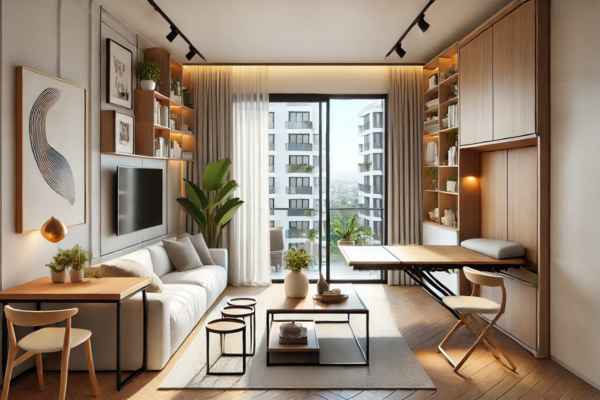
Space is at a premium, foldable and convertible tables can be game-changers. Wall-mounted drop-leaf tables can be folded down when not in use, freeing up valuable floor area. Murphy-style dining tables offer hidden functionality, transforming into a sleek unit when not needed. Extendable tables allow you to accommodate guests without permanently occupying too much space. Nesting tables or dual-purpose furniture, such as coffee tables that convert into dine tables, provide even more flexibility. These options allow you to enjoy a functional dining area without compromising your living room’s openness.
Smart Placement: Where to Put Your Dining Table
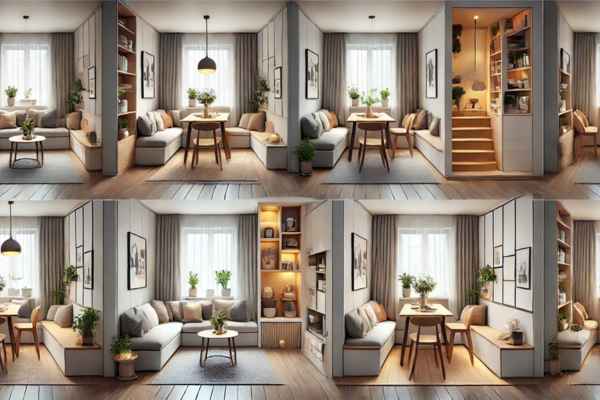
Strategic placement can make all the difference in making a dining table work within a small living room. Placing the table against a wall or under a window can create a designated dining area without taking up central space. Utilizing corners for a cozy dine nook can make the most of an otherwise unused area. If your living room layout allows, positioning the dining table behind the sofa creates a natural division between spaces. Using rugs, lighting, or open shelving can further help define the dining area without making the room feel overcrowded. By thinking creatively about placement, you can enjoy a practical dining area that blends seamlessly with your living area.
Multifunctional Furniture: Dining Tables That Do More
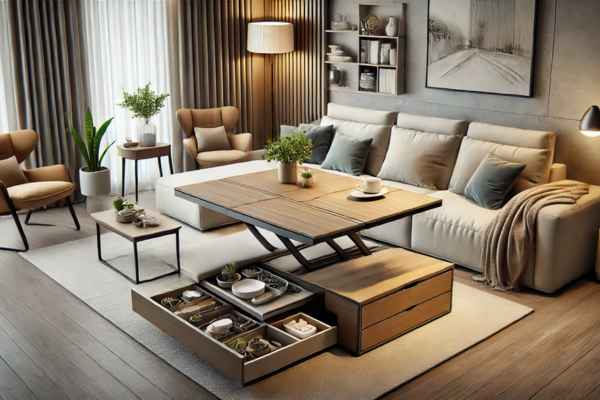
In a small living room, every piece of furniture should serve more than one purpose. Multifunctional dining tables are a great way to make the most of a limited area while maintaining both style and functionality. Consider a coffee table that converts into a dining table, allowing you to adjust the height as needed. Extendable tables provide flexibility, expanding when guests arrive and folding down when not in use. Storage-integrated tables, such as those with built-in drawers or shelves, offer a place to keep dine essentials like placemats and cutlery without cluttering your space. Another smart solution is a sofa-backed dining table, where the dining setup seamlessly integrates with the back of a couch, maximizing area without creating a visual divide. These innovative furniture choices help maintain a sense of openness while ensuring your dine area remains practical and inviting.
Using Built-in Seating for Space Efficiency
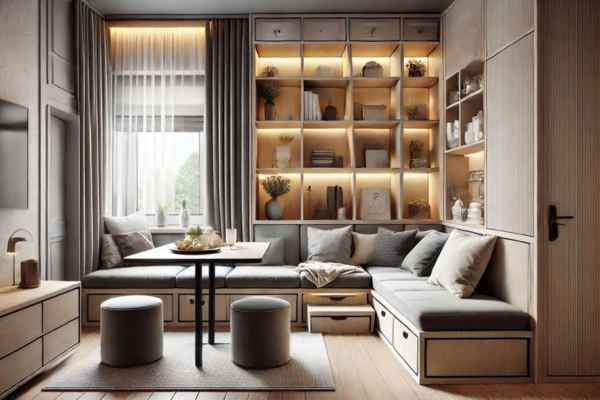
Built-in seating can be a game-changer when fitting a dining table into a small living room. Banquettes and bench seating, for example, provide ample seating while using minimal floor space. Placing a bench along a wall or under a window creates a cozy dine nook that doesn’t intrude on the rest of the living area. Storage benches offer an added advantage by doubling as a place to store extra dining essentials like table linens or dishware. If your area allows, a corner booth-style seating arrangement can make excellent use of underutilized corners, transforming a tight spot into a charming and functional dine area. Unlike traditional dining chairs, which require room to pull out, benches and built-in seating keep the area compact and organized, making them perfect for small spaces.
Maximizing Vertical Space for Dining Essentials
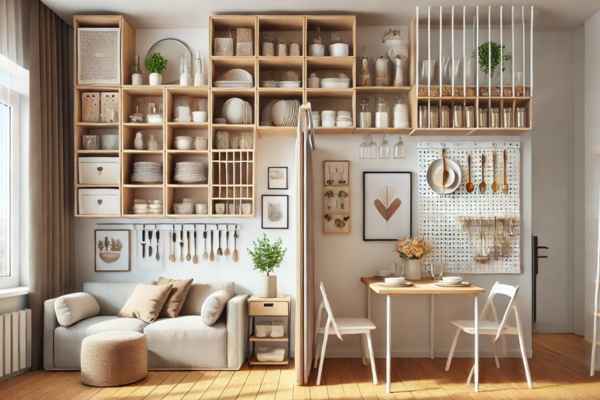
Floor space is limited, the walls become valuable real estate. Maximizing vertical space helps keep dining essentials organized while freeing up room for the table and seating. Installing floating shelves above the dine area provides a stylish yet practical place to store dishes, glassware, or decorative elements. Wall-mounted foldable tables are another excellent option, as they can be tucked away when not in use. Hanging peg boards or racks for dining accessories, such as plates, cutlery, or even foldable chairs, ensures that everything is within easy reach without cluttering the living area. Additionally, tall and narrow shelving units can serve as a partition between the dining and living areas while offering storage area. By thinking vertically, you can keep your dine space functional without compromising on comfort or aesthetics.
Creative Ways to Define a Dining Area in a Small Living Room
In an open-concept area, defining a dine area without making it feel cramped is key. One of the simplest ways to create separation is by using an area rug beneath the dining table, visually distinguishing it from the rest of the living room. Pendant lighting or wall sconces can further emphasize the dine space while adding ambiance. Another option is to use open shelving or a small partition to subtly mark the transition between the living and dine areas. If you prefer a more flexible approach, folding screens or lightweight curtains can temporarily divide the space when needed. Even simple décor choices, such as a statement centerpiece or a unique table setting, can make the dining area feel like its own distinct area. With these creative solutions, you can enjoy a functional dine space that blends seamlessly with your small living room.
Minimalist Styling to Make Your Small Dining Area Feel Bigger
Space is tight, a minimalist approach can help make your small dine area feel more open and airy. Choosing furniture with slim profiles and clean lines reduces visual clutter, making the area appear larger. A neutral color palette with light shades such as white, beige, or soft gray can create an illusion of openness, while mirrors strategically placed near the dining area reflect light and add depth. Opting for a glass dining table instead of a bulky wooden one further enhances the feeling of spaciousness. Keeping the dine area free from excessive decorations and sticking to a few well-chosen pieces—such as a sleek pendant light or a simple yet elegant table centerpiece—ensures that the space remains inviting without overwhelming the room.
Small Dining Room Décor Ideas That Enhance Space
The right décor can transform a cramped dine area into a stylish and functional area. One way to achieve this is by using vertical elements like wall-mounted shelves or framed artwork to draw the eye upward, making the space feel taller. A well-placed rug under the dining table helps define the area and adds warmth without taking up extra space. Choosing light, airy curtains instead of heavy drapes allows natural light to flow freely, making the area appear more expansive. Instead of large, bulky chairs, consider sleek stools or transparent acrylic chairs that provide seating without visually weighing down the room. By incorporating space-enhancing décor elements, you can create a dining area that feels both stylish and practical within a small living room.
How to Maintain Functionality Without Sacrificing Comfort
Balancing functionality with comfort in a small dining area requires smart planning and thoughtful furniture choices. Investing in multipurpose pieces, such as an extendable table or nesting chairs, ensures that the space remains adaptable to your needs. Prioritizing ergonomic seating, such as cushioned benches or chairs with proper back support, keeps mealtimes enjoyable without compromising on area. Keeping frequently used dine essentials within easy reach—whether in a nearby cabinet, a wall-mounted organizer, or a storage bench—reduces clutter while improving efficiency. Additionally, using proper lighting, such as warm pendant lights or adjustable wall sconces, enhances the ambiance and makes the space feel cozy rather than cramped. A well-planned layout that maximizes functionality while maintaining comfort ensures that your small dining area remains practical for daily use.
Common Mistakes to Avoid When Setting Up a Dining Space
Many homeowners struggle with fitting a dine table into a small living room due to common mistakes that make the space feel even more restricted. One major mistake is choosing oversized furniture that overwhelms the room rather than opting for compact, space-saving designs. Placing the dining table in a high-traffic area can disrupt movement and make the space feel cramped. Another misstep is neglecting storage solutions—cluttered tabletops and scattered dine essentials can make the area feel chaotic. Additionally, failing to define the dining space within the living room can result in a disorganized and uninviting setup. Avoiding these mistakes by selecting the right furniture, optimizing layout, and keeping the space tidy ensures a functional and visually appealing dining area.
Conclusion
Fitting a dining table into a small living room is all about creativity, smart design, and strategic furniture placement. By embracing minimalist styling, incorporating space-enhancing décor, and prioritizing multifunctional furniture, you can create a dining area that feels both open and practical. Avoiding common mistakes and maintaining a balance between comfort and functionality will ensure that your dine space remains inviting without feeling cramped. With the right approach, even the smallest living rooms can accommodate a stylish and functional dining setup, making mealtimes enjoyable and hassle-free.
